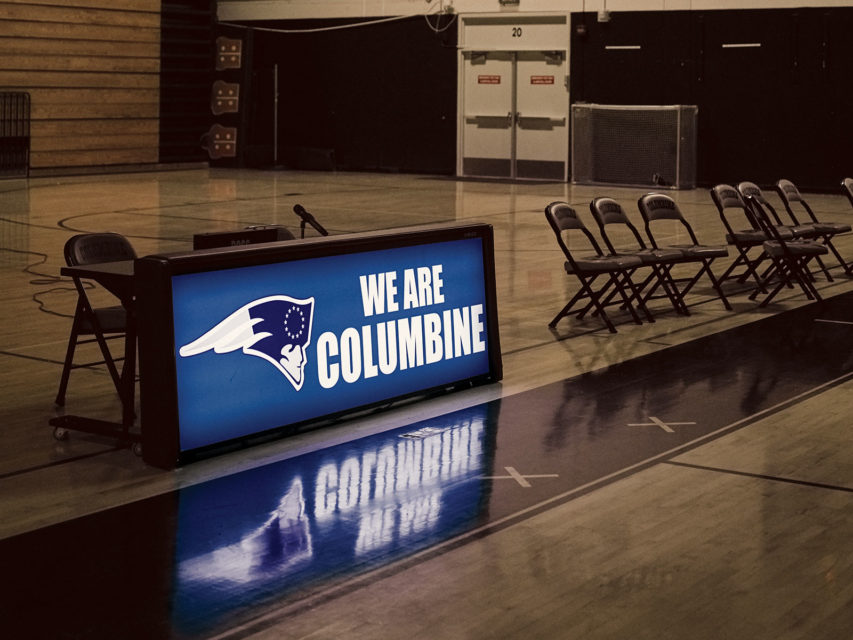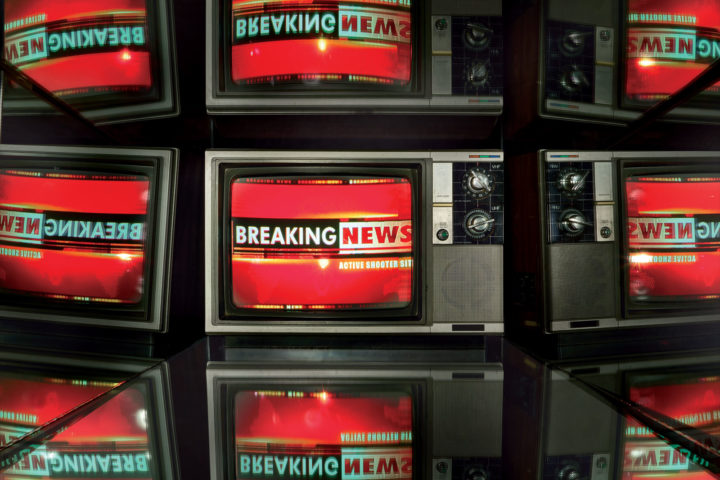On April 20, 1999, our world changed.
Now, finally, a few remarkable kids are helping to transform it again.
|Nineteen years into the School Shooter Era, I had grown hopeless, despondent, and angry. Nearly two decades after Columbine, the attacks were still coming, the death counts had continued to rise, and each new horror had implicitly challenged the next would-be perpetrator to capture the media’s gaze and the nation’s attention. Three of the five deadliest mass shootings in the United States have happened in the past three years. The tragedy at Columbine—once unthinkable—no longer ranks in the top 10 in American history.
I witnessed firsthand the terror of that day. I spent much of April 20, 1999, reporting from Robert F. Clement Park, next to Columbine High School, and remember well the chaos and anguish. Nothing, though, scared me more than the morning of April 21: There were no tears, just blank affects and vacant stares. Most of the student body was shrouded in a chilling post-traumatic fog. The kids described the moment their sobs had stopped, abruptly, as if a switch had flipped and they’d lost the ability to feel. When they asked me if they would be OK, I told them they would get through it—though I wasn’t yet sure exactly how. That’s what led me to spend the next decade reporting and writing Columbine. I needed to know what would become of those kids.
When the book was published in 2009, however, something peculiar happened—I became “the mass murder guy.” After each new outrage, I was called upon by reporters, TV producers, and magazine editors to provide perspective on what we had learned. It was revolting, but it also gave me an unusual glimpse into how the media covers these spectacle murders, these made-for-TV performances. The killers have been telling us for 20 years that this kind of attention is what they want. They tell us in their actions and in their twisted manifestos. They tell us they are studying us and learning how to become notorious from the one source that can deliver that infamy. And we, the media, keep falling for their ploys.
These days, I spend a lot of time talking to high school kids, other journalists, and general audiences, and I’ve seen a drastic change in their responses to these attacks. For the first 17 years, the question was always: Why? After the Pulse nightclub attack in Orlando, Florida, it became: How will this ever end?
Our answer may have arrived on February 15, 2018. One day after escaping Marjory Stoneman Douglas High School in Parkland, Florida, where a shooter had murdered 17 students and staff members, David Hogg called out Adult America for allowing its kids to die. In the days and weeks and months after the massacre, the 17-year-old senior and some two dozen of his peers began mapping out America’s first plausible chance to put the School Shooter Era behind us.
Before Parkland, the aftermath of the 2012 shooting in Newtown, Connecticut, was our best hope for change. Surely, everyone seemed to agree, the slaughter of six-year-olds would shame Americans into action.But it wasn’t the enormity of the horror that would compel us to act. It was the messenger. When we see moms or dads of those murdered, we experience sadness, pain, and anguish. We don’t fear for their lives. We don’t picture an AR-15 pointed at their heads. Fear changed the equation at Parkland. The targets spoke, and their logic was powerful. But it was the emotional impact of what they said that finally drove us to act. When we see the Parkland students, we see our own kids, and we are forced to confront what we’ve been doing to our children: marching them off to die.

The survivors of Columbine never organized in the same way, because they had no reason to believe this kind of violence would become distressingly routine. By 2018, everything was different. The students at Marjory Stoneman Douglas grew up as part of the Columbine Generation; they had been doing lockdown and lockout drills since kindergarten. They knew that three big issues had gained traction around this problem—mental health care, media lionization of the perpetrators, and guns—and they’d spent their entire lives watching adversaries stall progress on all three of those by deflecting to the other two. They knew instinctively that they had to speak with one voice and focus on one solution. The choice for them was easy. They’d focus on guns.
The students mobilized immediately. They dominated the media narrative from day one, and by day six they’d unleashed their first big protest: Three buses carrying about 100 Parkland survivors snaked more than 400 miles up Florida’s Turnpike to meet state legislators and the governor in Tallahassee, where they gained significant concessions. They had much more ambitious goals, though. They’d said from the outset that they had to change the legislators to change the legislation.
Their first opportunity was the 2018 midterms. They targeted youth voters, and turnout spiked from 21 percent to 31 percent, compared to the previous midterms. They helped drive large numbers of U.S. House of Representatives candidates to run aggressively on guns. And guns leapt to the fourth most important issue among voters in both CNN and NBC exit polls. Professor Robert Spitzer of SUNY Cortland, an expert on gun legislation, says that the Parkland students made gun safety a prominent issue in American politics for the first time in nearly a generation. “They provided a kind of rocket fuel for that movement,” he says.
The students also inadvertently transformed the media landscape almost overnight, and perhaps permanently. Hogg appears to be the first survivor of a mass murder in history to become more famous than his attacker. It took him less than 24 hours. Then came 18-year-old Emma González. As a test of how the ground has shifted, I’ve spent the past few months asking people at book events and journalists who covered the Parkland murders if they remembered the killer’s name. Roughly two percent could recall it—because the Parkland kids succeeded in being more interesting than their assailant.
Their uprising also came at the right time: Americans don’t seem to have the same fascination with mass shooters they once did. Twelve years ago, we fixated on the rantings of the Virginia Tech murderer. Seven years ago, we were stunned by the gruesome theatrics in an Aurora cinema. Today, we can barely conjure the names of the Las Vegas killer or the Pulse nightclub shooter. Now, we just want it to stop. That is progress.
We waited too long to do something after Columbine, but the 13 murdered there are not forgotten. Their memories live on in the fight the Parkland kids are waging today. Parkland wasn’t the last of these tragedies, but 20 years after Columbine upended our world, we may be witnessing the beginning of the end.
Dave Cullen is the author of Columbine and Parkland: Birth of a Movement, which was published in February by Harper. Email him at letters@5280.com.
This story is part of 5280 Magazine’s special issue dedicated to the 20th anniversary of Columbine. Read more about the project here.

NEXT: The news coverage of Columbine helped turn the tragedy into an international phenomenon.
Are journalists and media outlets still making the same mistakes 20 years later?

